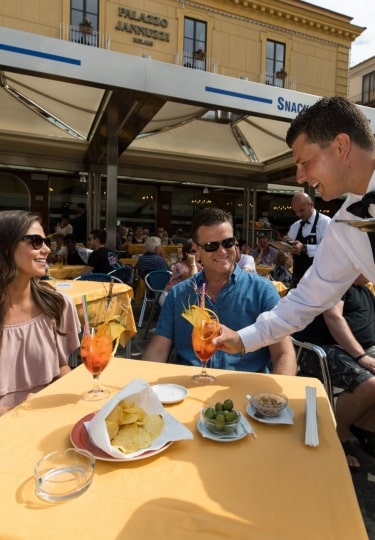Tipping in Italy is a relatively straightforward business. For one thing, there aren’t any huge cultural hurdles to be aware of.
As a broad brush, the answer to the question, “Do you tip in Italy?” is a resounding yes. However, whereas in the U.S., waiting staff rely on tips to boost their wages, that isn’t the case in the Bel Paese.
La mancia (a tip) is a bonus in Italy, a small way of expressing gratitude for the warm and attentive service (and unexpected shots of free limoncello) at the conclusion of a perfect candlelit dinner in Riomaggiore, for example.
Whether you’re admiring the ruins of the Roman Forum with a guided tour, catching a ferry to Capri, or exploring the canals of Venice on a gondola, this guide to tipping in Italy will ensure complete confidence as to whether to leave a gratuity.
Italian Tipping Etiquette
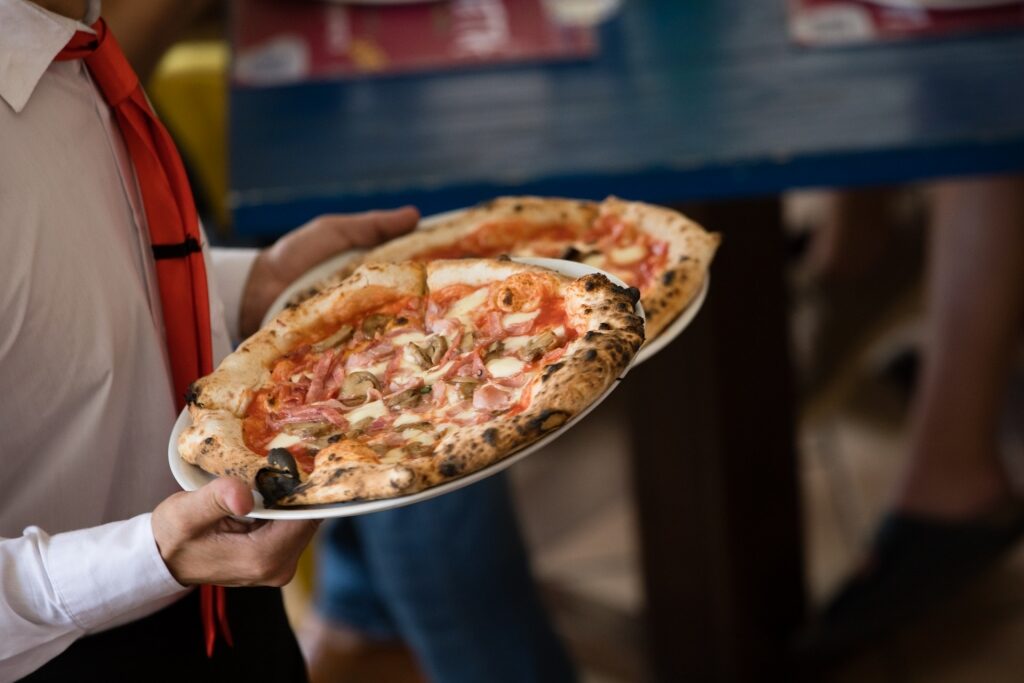
Naples
In restaurants, Italians tend to tip only for truly top-flight service. In this case, they’ll usually add a tip of anywhere from 10 to 15 percent.
This kind of tipping in Italy usually only takes place in upscale and fine dining restaurants, when the meal takes on a kind of near-spiritual aura, and, unusually for Italy, everyone seems to be whispering over their dishes, before the chef appears at some point to enthusiastic applause.
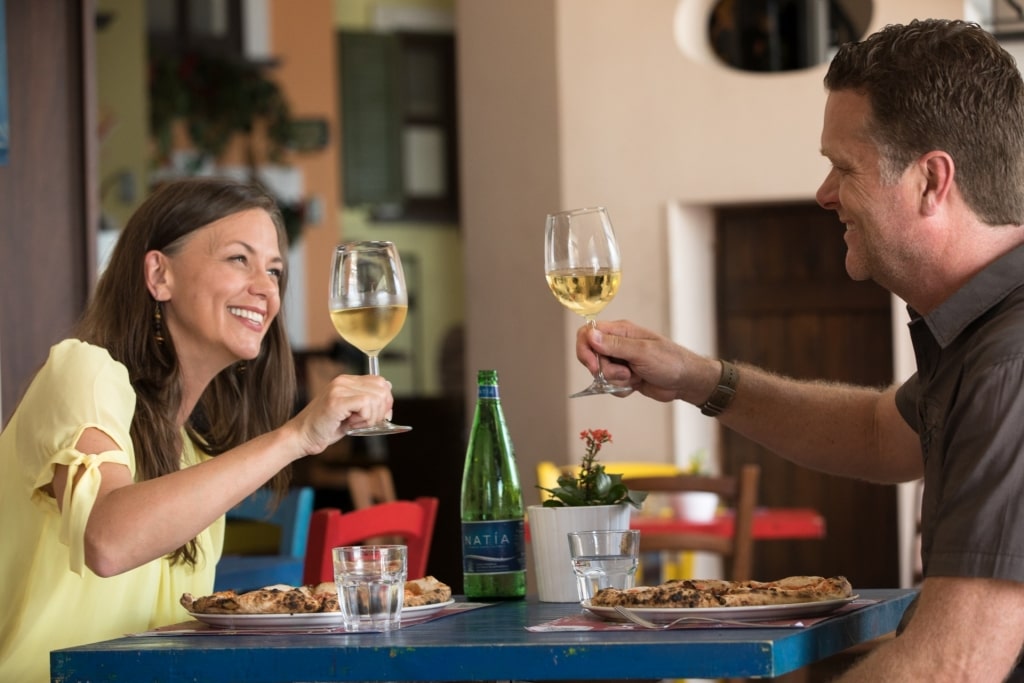
Naples
While Italians tend to save this kind of gesture for these ecstatic moments, it’s okay if you find the service at the local trattoria equally wonderful in its own homespun way.
Feel free to leave the change from the bill, or whatever amount you like. You can leave the money on the table or hand it over directly to your waiter.
Read: Best Food Cities in Italy
Coperto Means Covered
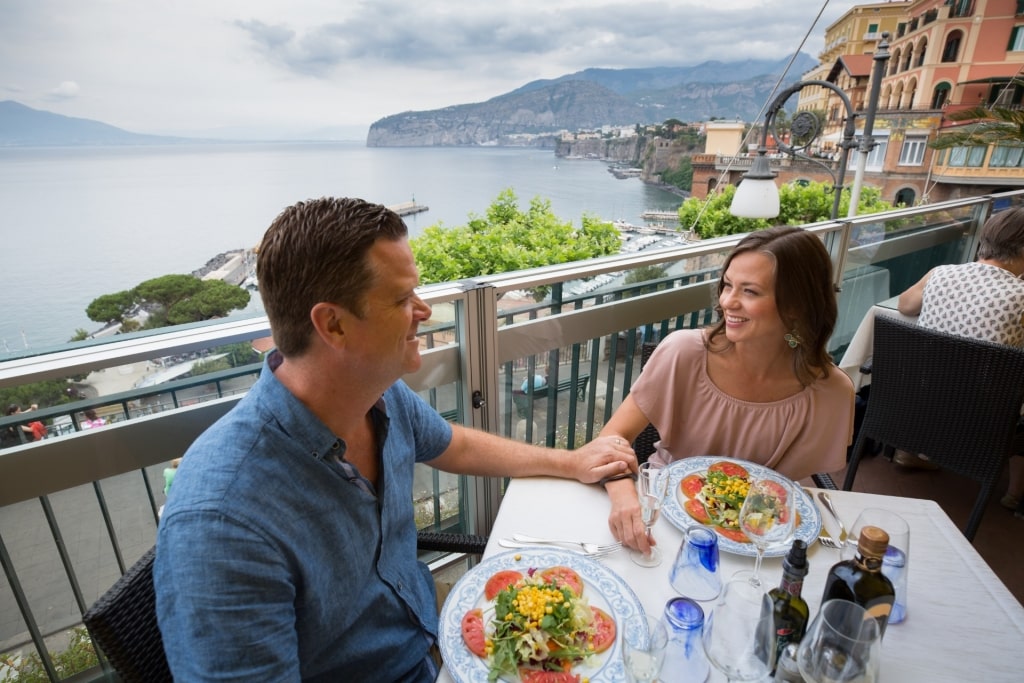
Sorrento
In many Italian restaurants and bars, you’ll find that a coperto or service charge has been included in the bill.
This added charge, typically a small amount along the lines of a few euros per person, is included to cover any range of expenses for the establishment: the crisp grissini, table service (typically bars only for this one), even the washing of the tablecloth.
Like many things in Italy, coperto has been around since the Middle Ages. The literal translation of the word is “covered”, although it can also mean “indoors”.
This latter definition relates to its original purpose, for when medieval travelers, their cloaks soggy from the storm, would seek shelter off of the road. These visitors would often arrive with their own food, so coperto was paid to cover their use of all food-consuming necessaries at the roadside inn in which they’d found themselves.
Feel free to check with staff in advance if your meal has coperto included in the bill. If it is, obviously you may feel more disinclined to leave a tip.
However, coperto does go directly to the restaurant rather than the staff. So remember that coperto is not the built-in way of you rewarding exceptional service. That would be servizio incluso (service included).
Servizio Incluso
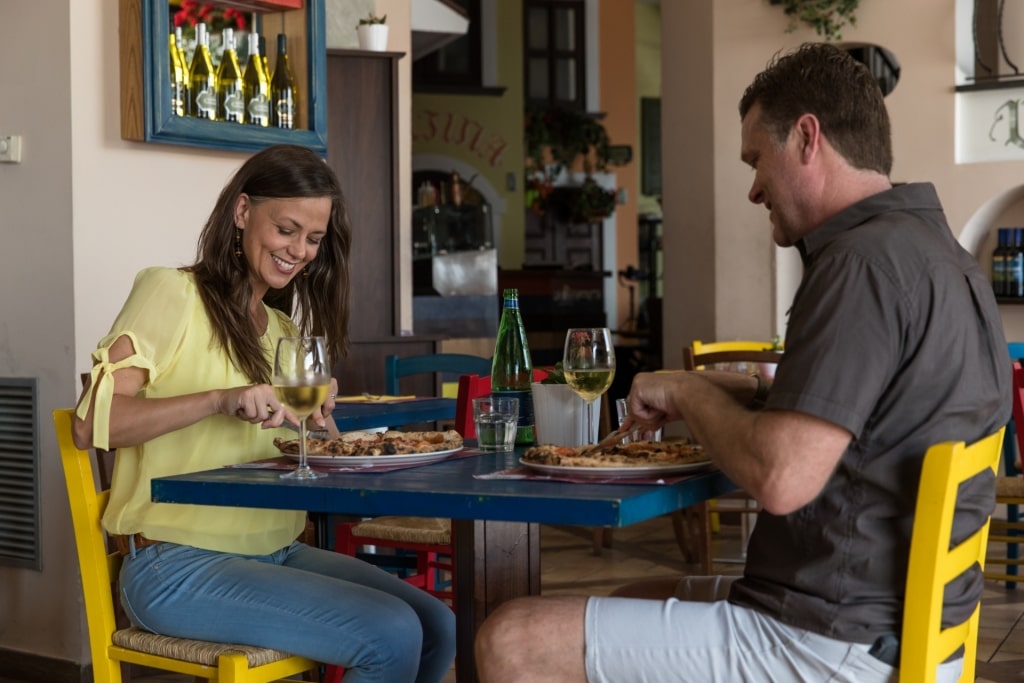
Naples
However, if you see servizio incluso on your bill, then you can confidently not leave a tip, knowing that a tip for the staff has been included in your total.
Beyond the hospitality sector, there can sometimes be a servizio incluso or gratuity included in the price of some pre-paid group tours.
Carry Cash for Tipping Guides

Pompeii
Italian guides can be some of the very best you’ll encounter anywhere. Often drawn to these typically low-paying roles because of a passion for their country and culture, their knowledge and enthusiasm can be infectious.
A good guide returns to life the lost souls of Pompeii, makes tangible the catastrophes of Catania, or does justice to the glory of Renaissance Florence.
As such, when you’re carrying cash for tipping in Italy, make sure a good portion of that cash is earmarked for your hard-working Italian tour guides.

Wine tasting in Italy
The preferred method of tipping a guide is to discreetly hand over bills at the end of the tour. It is occasionally possible to tip with a credit card, but if there’s anywhere that looks to keep things classic, it’s the Bel Paese.
A “grazie”, even with mangled pronunciation, is always appreciated as well. Don’t be crushed if they reply with a “thank you” in English.
A general guideline for tipping in Italy with tour guides is to add 10 to 15 percent of the total cost of the tour on top. If you’re a large group, five euros each for a half day and double that for a full day is a good rule of thumb.
However, you can of course adjust the amount based on your satisfaction, the length of the tour, or the itinerary’s complexity.
Tipping Kitty
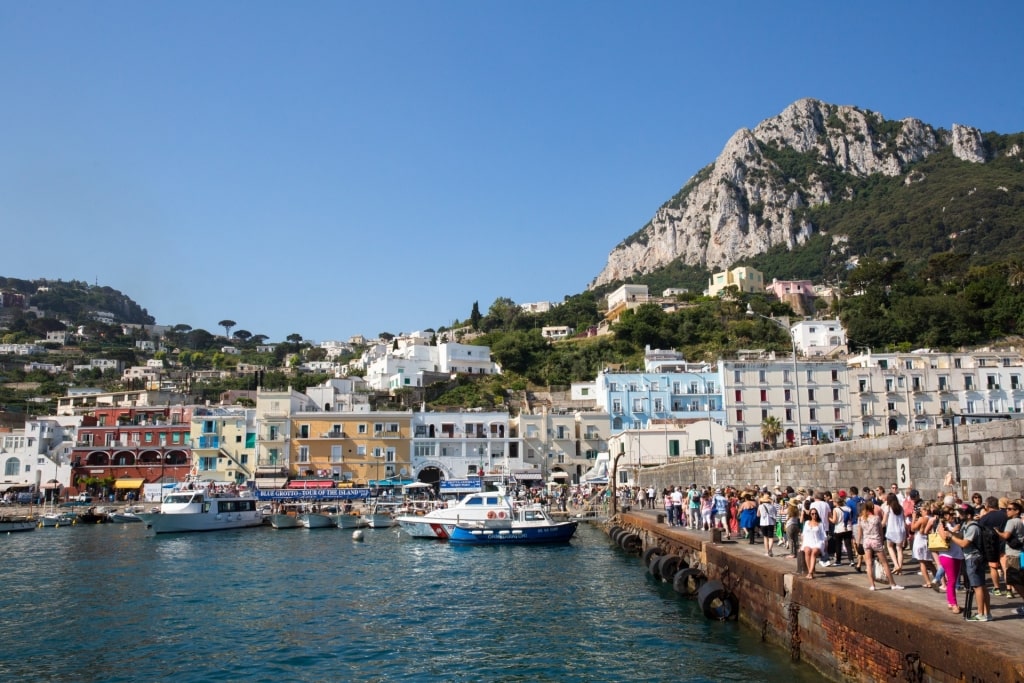
Capri
It’s often a good idea, if you’re on a large group tour, to arrange a tipping kitty for the various experiences that you have in the day or days ahead of you. This will then be dipped into as required for tips for guides and helpful drivers.
It’s often the most convenient method of tipping, helping to ensure everyone has chipped in evenly, as well as taking the stress out of having to worry about the transfer of the tip. Of course, if you’d like to tip individually as well that’s absolutely fine.
Read: How to Plan a Trip to Italy
Tipping in Taxis
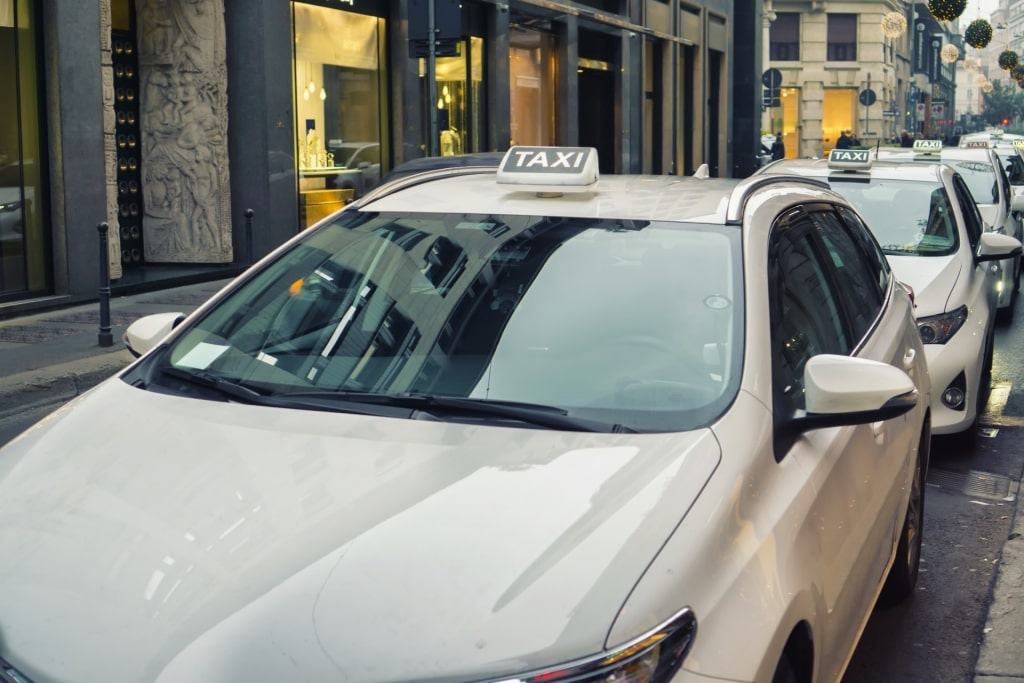
Taxis in Italy
Taxi drivers in Italy are often your first unofficial tour guide on a trip. If your journey’s long enough and you get friendly (almost an inevitability), it’s possible they may make, if convenient, a slight detour to gift you a parcel of their just-picked porcini mushrooms from their home.
Even if you’re not left clutching fungi and promising to stay at their home on your repeat visit, you may still be inclined to leave a small tip for the helpful orientation they’ve provided. This can be a small but appreciated gesture such as rounding up the fare.
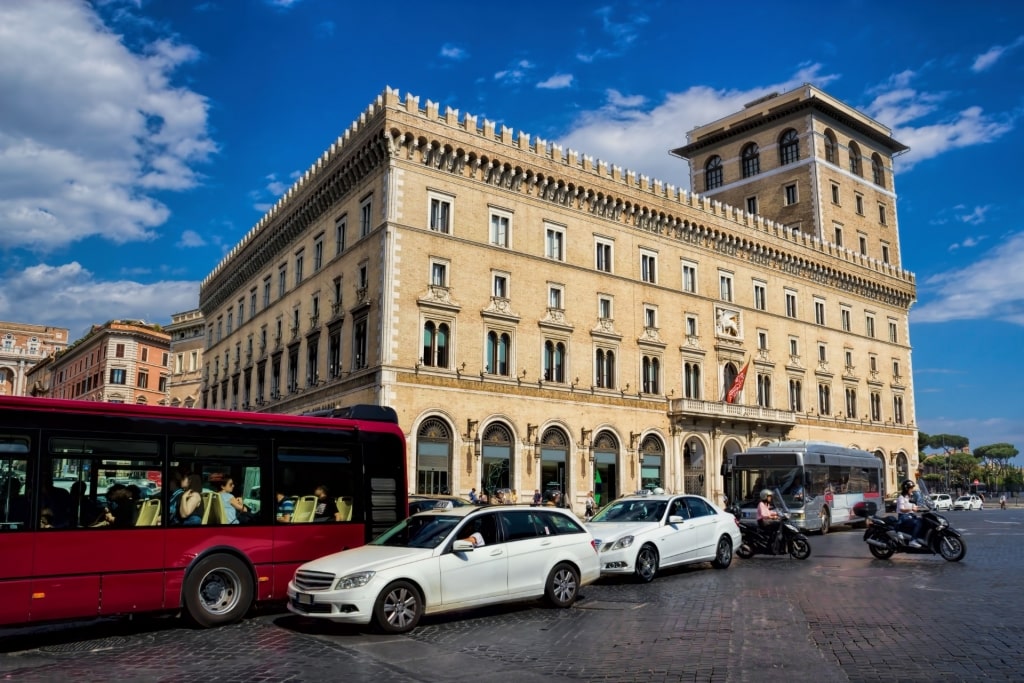
Rome
You’ll find that a tip is never added automatically in an Italian cab. And while tipping in Italy is rarely ever mandatory, it is more prevalent and expected in Italian cities such as Rome, Florence, or Naples where taxi drivers are more used to receiving tips.
However, should you receive porcini, or maybe there was some effort exerted wrestling your overstuffed luggage into the trunk, a larger tip may be more appropriate. Also offer up a “molte grazie”.
Tipping Gondoliers in Venice
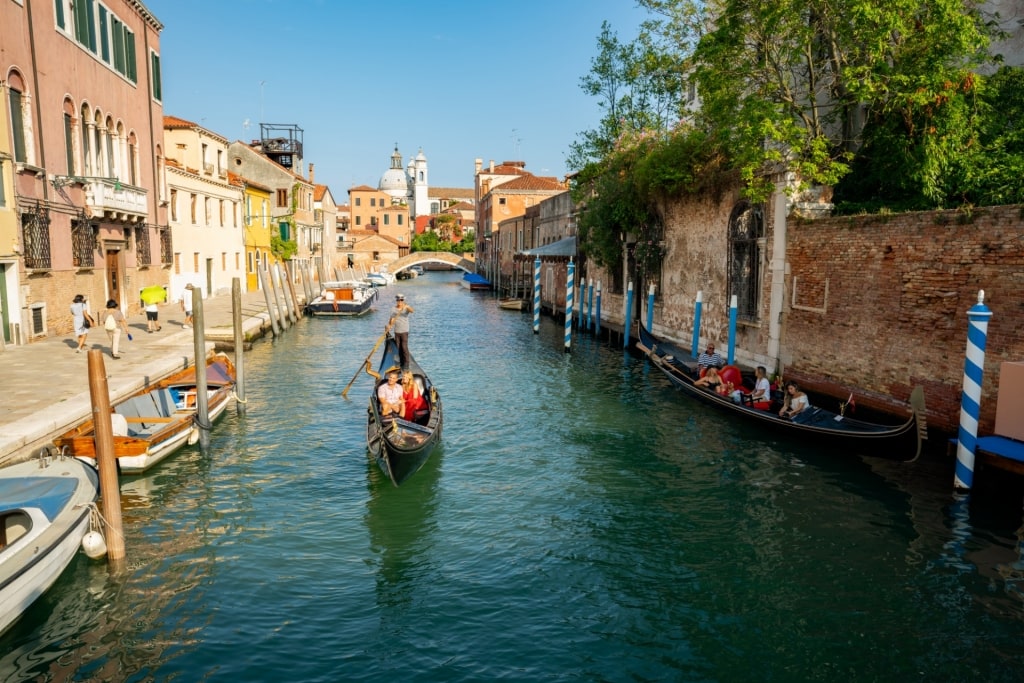
Gondola ride in Venice
Venice is known for its gondola rides, but tipping falls into a strange zone: it’s not entirely a taxi ride nor a tour guide, yet it has elements of both.
For all of that, tipping your brawny, striped-shirt boat-pusher is not usually expected. A Venetian gondolier charges a fixed rate that’s regulated by the city authorities. It covers the cost of the ride, regardless of passenger numbers or duration.
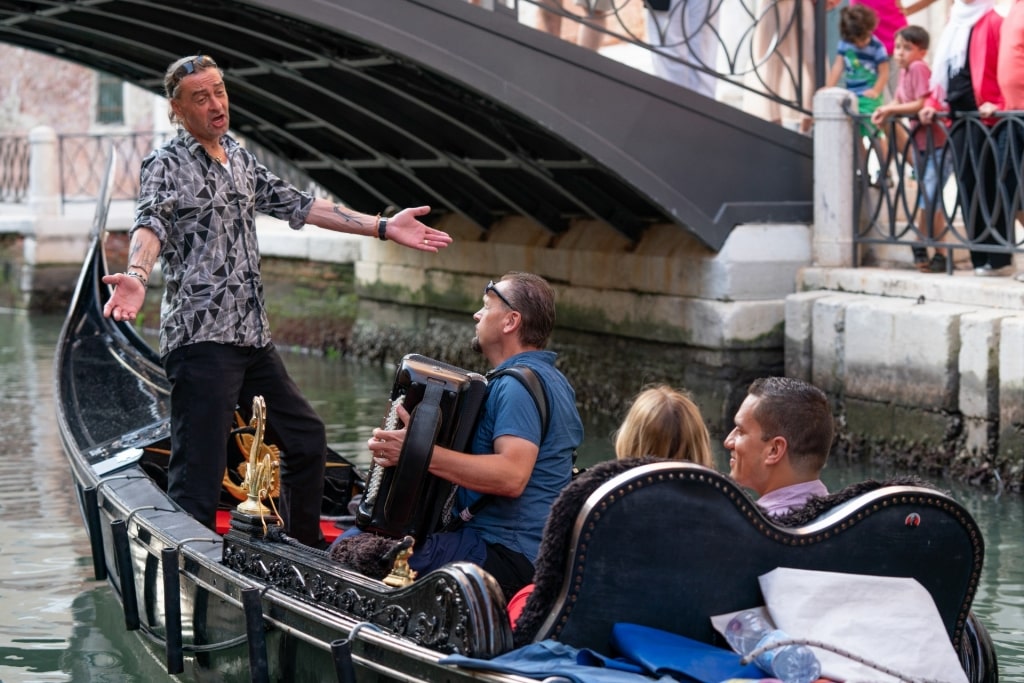
Gondola ride in Venice
Nevertheless, you may be inclined to tip them, especially if they’ve been belting out near operatic Italian ballads as you meander along the pastel-colored waterways of Venice. With tipping discretionary, there’s no fixed percentage that’s usually added. At the base level, simply rounding up the fare will bring a smile to your gondolier’s face.
If you’ve had a particularly long or customized gondola ride during your day in Venice, or if the gondolier has shared useful information about Venice’s best cichetti bars, or if his interpretation of “That’s Amore” has left you with a tear in your eye, a more generous tip is at your discretion.
Tipping at Beach Clubs
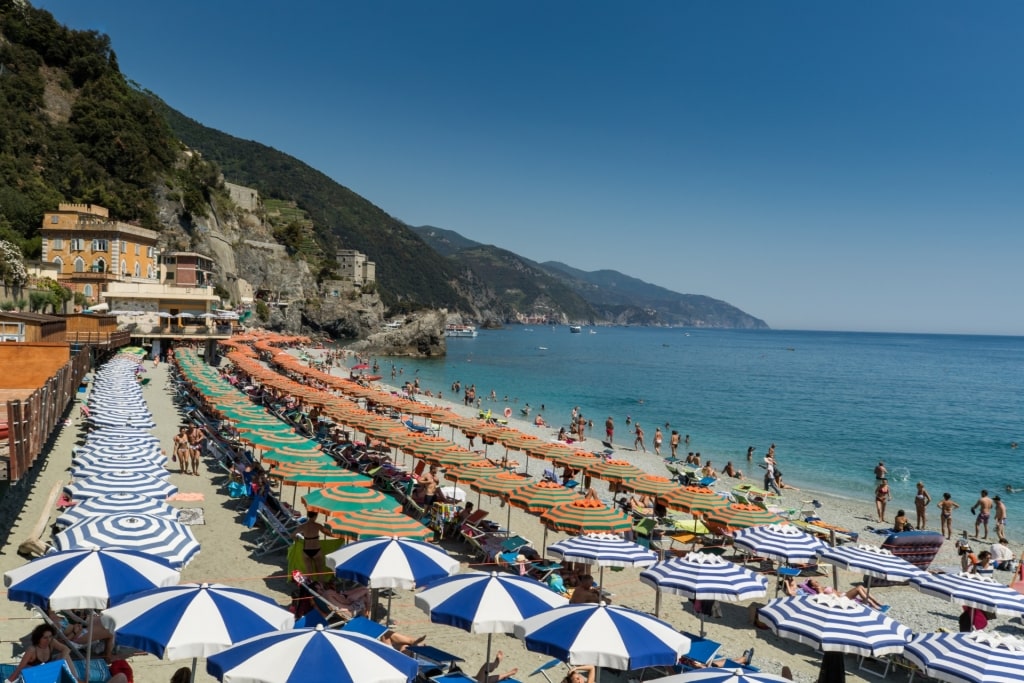
Cinque Terre
As soon as the first glimmer of warm sun strikes the turquoise waters of whichever glorious Italian sea you’d like to imagine, the beach clubs begin to ply their trade.
While they’re notorious for those used to an Italian beach visit that doesn’t come laden with fees, on the other hand, beach clubs do offer a high level of amenities for their charge.
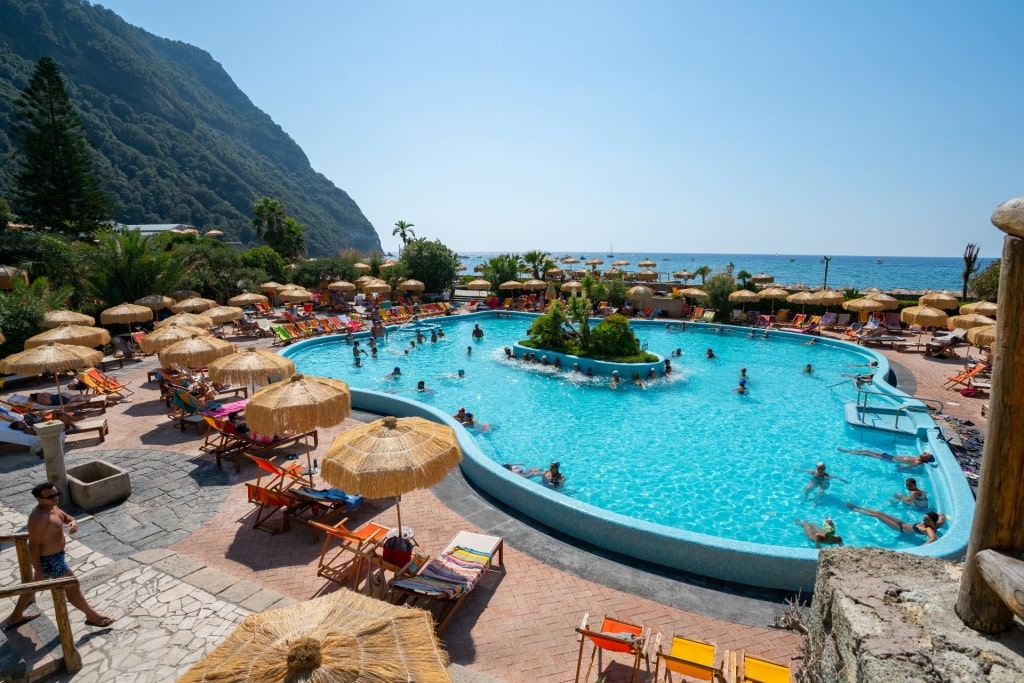
Poseidon Thermal Gardens, Naples
You can expect clean changing rooms and restrooms, for example, not to mention an upscale vibe. Drinks and snacks can make their way to your sun lounger without you having to leave your shady spot beneath a tangerine-striped umbrella.
As you have already paid an entry or rental fee for this chic, well-maintained situation on the shore, tipping is often entirely unnecessary. Coperto, or a cover charge, will also make an appearance here.

Bar in Italy
Again, however, if you feel that you’re receiving superb service, or that your Negroni is mixed to perfection, you may want to tip.
Small bills or coins discreetly passed to servers is the preferred method, while a 5 to 10 percent gratuity on a bar or restaurant bill will be warmly received.
Whether you can tip the DJ to not play the macarena for the third in a row is, however, probably beyond the persuasive power of a few euros.
Bus Drivers on Tours
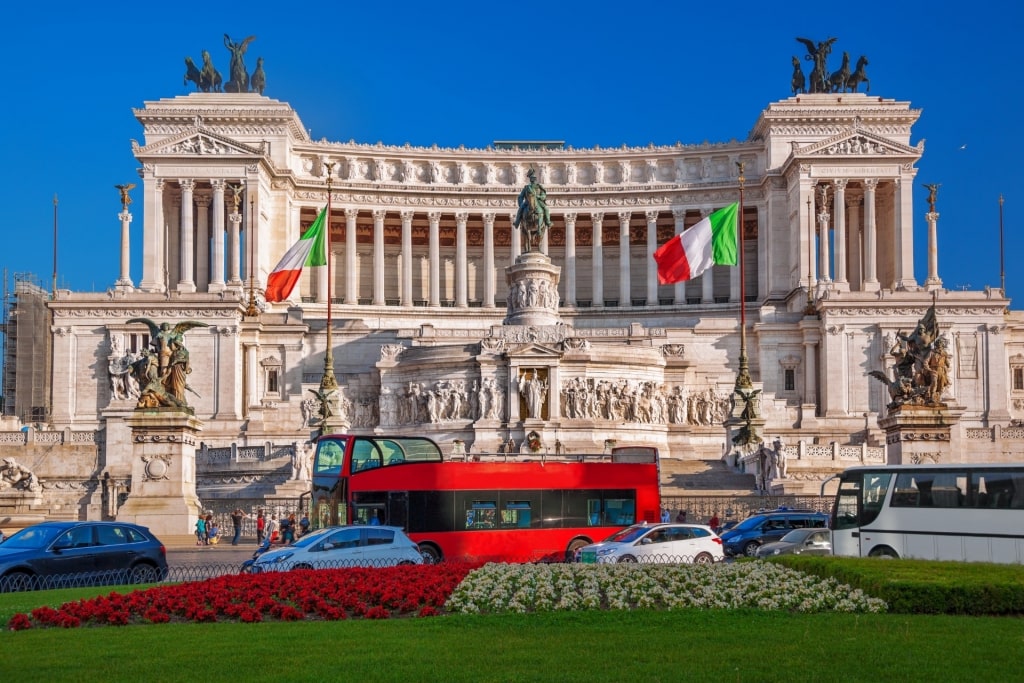
Rome
In the same way as waiting staff, you’re not expected to tip bus drivers on a tour. As they’re paid a living wage and aren’t reliant on tips, it won’t be expected.
However, if you’re sitting near to them at the front of the coach, and they’ve regaled you with their nonna’s recipe advice for how to do carbonara the authentically Roman way, then you might feel inclined to tip.
In this case, do so directly and discreetly. As it’s wholly unexpected, anything up from a few euros is appropriate. Throw in a “grazie mille” as well.
Who You Should Definitely NOT Tip
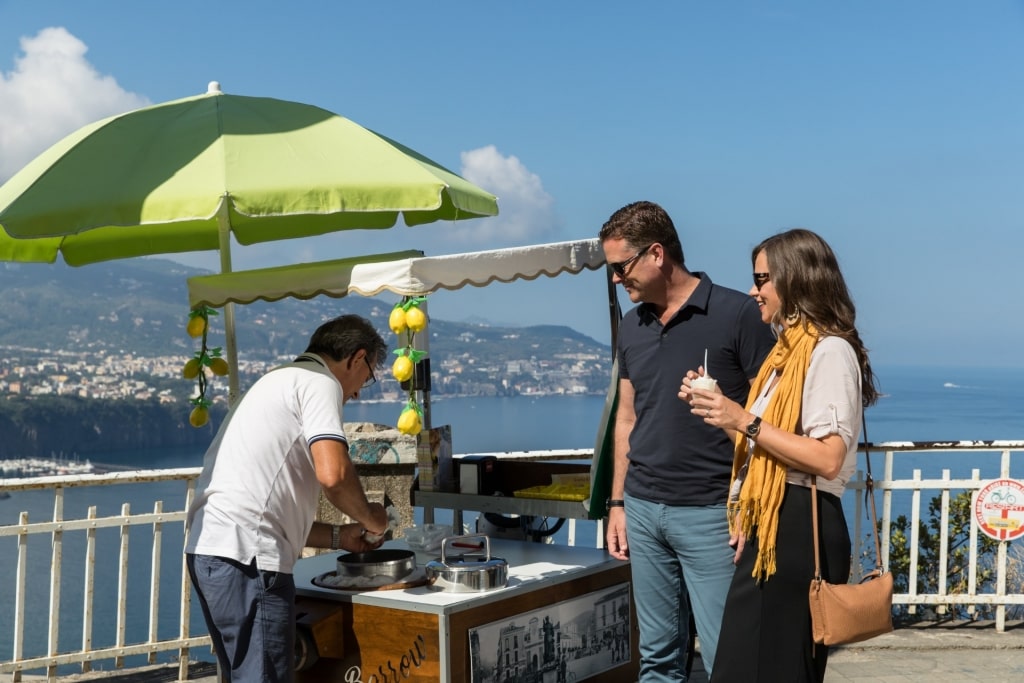
Amalfi Coast
If you’re picking up from a hole-in-the-wall or a counter service cafe or bar, tipping is not expected. So take your slice of pizza al taglio with a cheery “grazie” and keep your coins for the gelateria a little way along the strada.
Public officials won’t require tipping, and neither would metro personnel or drivers of public buses.
There’s no need to tip after your Swedish massage at Giardini Poseidon Terme (or alternate spa), nor is there any need to tip your nail technician, hairdresser, or barber.
And, of course, if you feel that you’ve had terrible service, definitely don’t feel obliged to tip. Remember that tipping in Italy is not as common or expected as in some other countries.
Save those euros for those moments, and there’ll be many, when Italians demonstrate that warmth and attentiveness that’s the real reason you return (rather than the mystical power of the Trevi Fountain, a popular Roman landmark).
Tipping Without Tipping
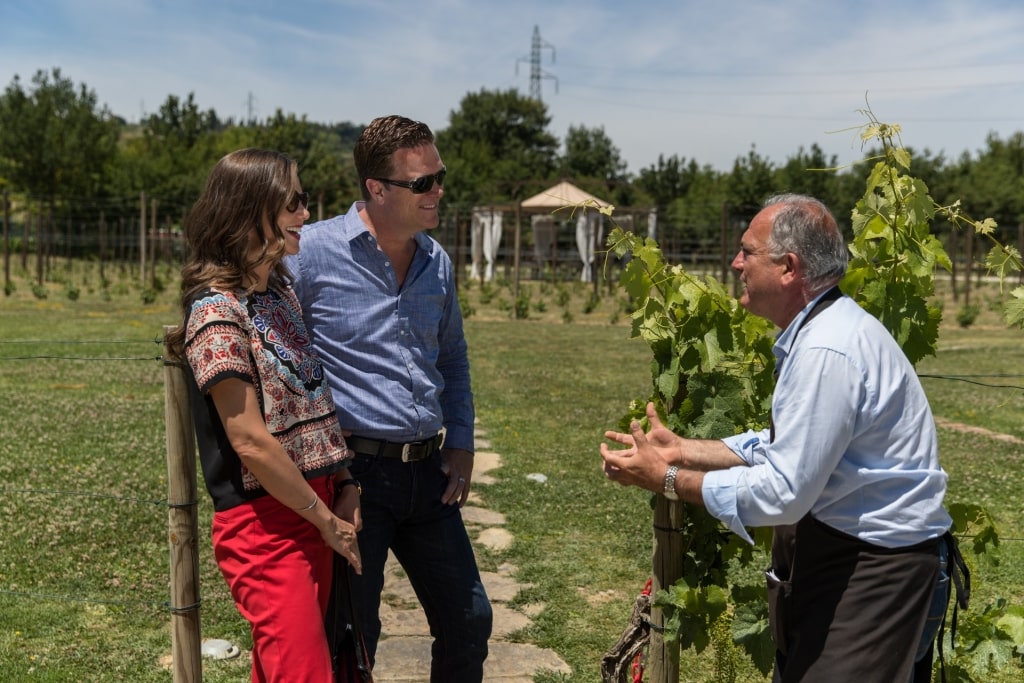
Florence
Today, of course, there is a multitude of ways of saying thanks other than pressing crisp euros into an Italian palm.
If you think tipping doesn’t feel quite right in a situation, trust your gut. Instead, be expressive with your thanks, either in the moment with a “molte grazie”, or afterward. Perhaps let the management know on your way out just how special Chiara made you feel during lunch.
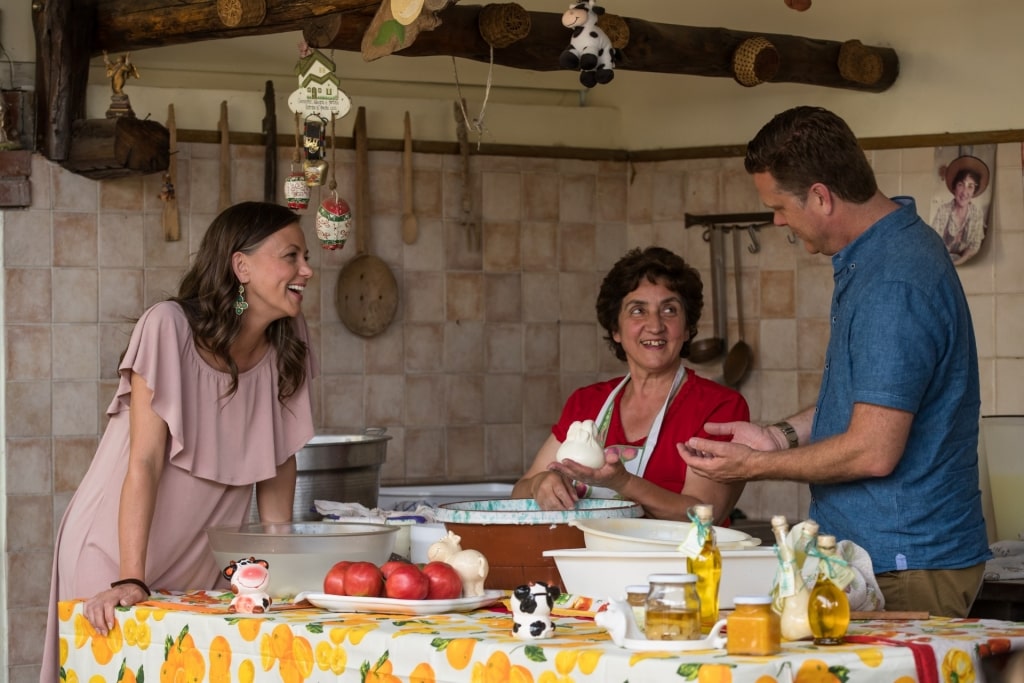
La Sorgente Farm, Sorrento
If you’re still feeling a little too shy to attempt to converse with an Italian person who may or may not be fluent in English (tip: they usually are), then show your appreciation online.
Give a social media shout-out or a review on any number of travel-related sites. This form of appreciation, although indirect, can have a more lasting effect on your superb server/guide.
Read: An Insider’s Look at Italian Food Culture
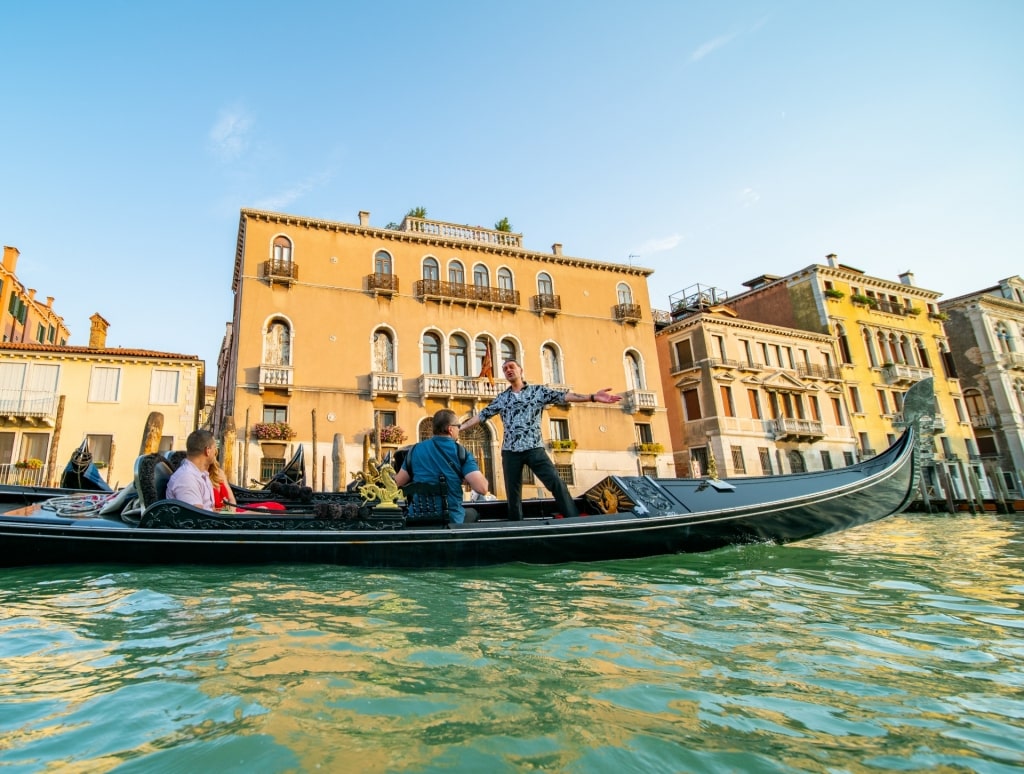
Venice
The question of, “Do you tip in Italy?” is best answered while on a cruise to this culturally rich country full of engaging locals. Browse our cruises to Italy and book an unforgettable Italian vacation.
